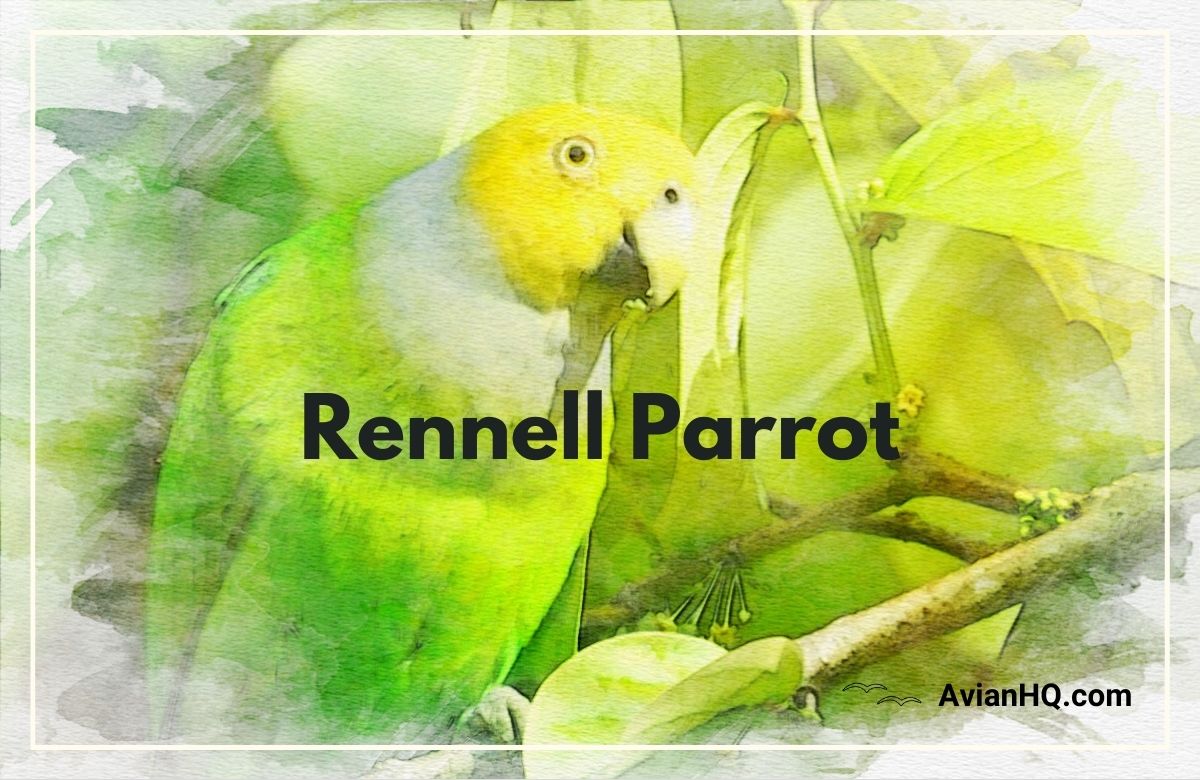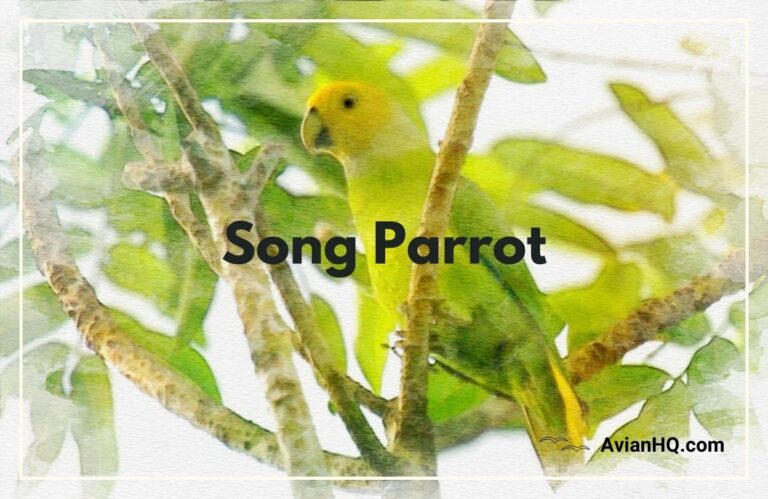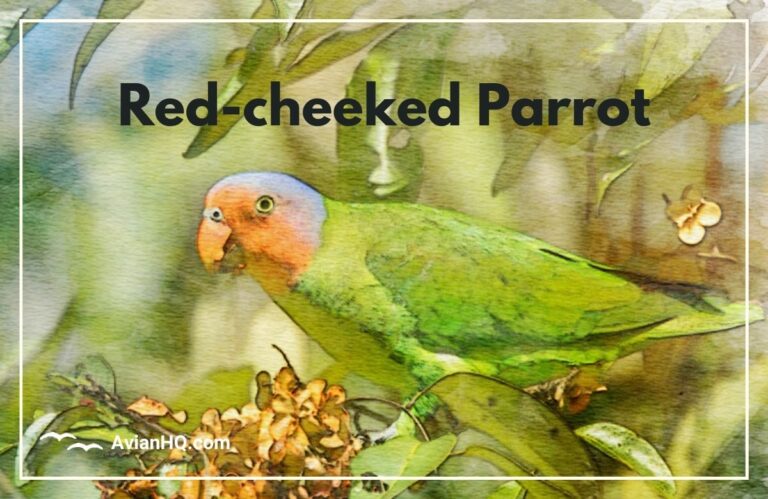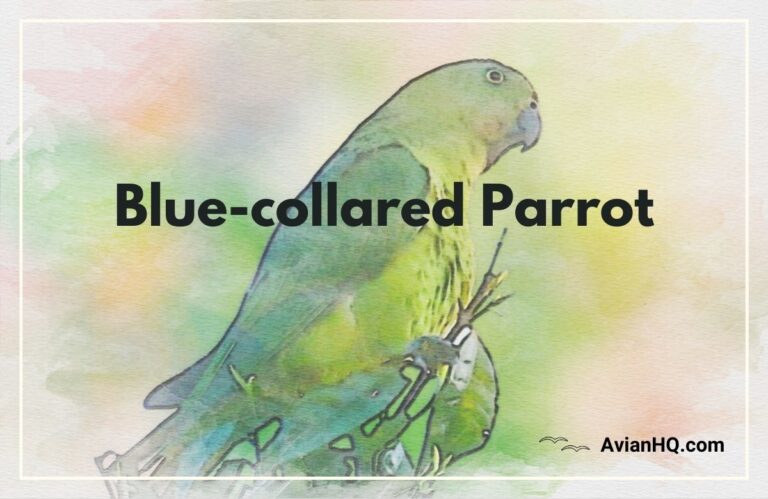Rennell Parrot (Geoffroyus hyacinthinus)
The brilliant plumage and curious behaviors of parrots have captivated people for centuries. Of the many parrot species that exist worldwide, one of the most fascinating is the Rennell parrot (Geoffroyus hyacinthinus), a species endemic to the remote Rennell Island in the Solomon Islands archipelago.
As you gaze upon the Rennell parrot’s vibrant greens, blues, and reds, you can’t help but admire the beauty of this island dweller. Yet there is more to this parrot than meets the eye. The Rennell parrot has a unique natural history and specialized adaptations that allow it to thrive in it’s island home.
This species is more than just a colorful cousin of other parrots – it fills an important niche in Rennell Island’s ecosystem. Protecting the Rennell parrot also means preserving the health of the island’s forests, on which both the birds and local islanders depend.
In this article, you will uncover the secrets of the Rennell parrot’s life and learn what makes this species special. We will explore the Rennell parrot’s evolutionary origins, physical appearance, habitat, diet, breeding behaviors, conservation status, and the efforts underway to protect this extraordinary bird into the future. Let’s take flight and delve into the captivating world of the Rennell parrot!
History and Discovery
The Rennell parrot was first described by the English zoologist John Gould in 1861. The type specimen was obtained during the voyage of H.M.S Herald and collected on Rennell Island.
Gould originally named the species Geoffroyus hyacinthinus, classifying it as a separate species from the song parrot of the nearby islands. The specific epithet refers to the hyacinth-blue plumage markings.
During the late 1800s to early 1900s, several collectors obtained further Rennell parrot specimens from brief stops on the island. In the 1930s, Albert S. Meek conducted more extensive fieldwork on Rennell and provided additional natural history notes.
The Rennell parrot was reclassified as a subspecies (Geoffroyus heteroclitus hyacinthinus) in the 1970s, before again being elevated to full species status in the 1990s based on behavioral and morphological differences.
Further field studies in the 1980s and 1990s gathered data on population numbers, breeding biology, and habitat use. But much remains unknown about this little-studied island endemic. More research is needed to elucidate the Rennell parrot’s ecology and evolution.
Physical Appearance
The Rennell parrot is a medium-sized parrot, measuring approximately 11 inches (28 cm) long and weighing 3.5-4 ounces (100-110 grams).
The plumage of the male Rennell parrot is primarily green, with a bright blue patch on the crown, nape, and sides of the head. A distinctive lavender-blue band runs across the upper breast. The lower breast and belly are yellow-green, and the tail feathers are bluish-green with yellow tips.
Female Rennell parrots have a similar green and blue coloration, but the blue hues are darker and more muted. Females also have an overall grayish tinge to the head and neck. The lavender breast band is reduced compared to males.
The stout bill of the Rennell parrot is gray-black, and the irises are dark brown. Legs and feet are grayish in color. Juveniles resemble adult females but have less vibrant plumage overall.
The Rennell parrot is most closely related to the song parrot, but can be distinguished by it’s larger size, more extensive lavender breast band, and the bluer hue of the female’s head. In flight, the Rennell parrot has relatively quick, direct wingbeats.
Habitat and Distribution
The Rennell parrot is endemic to Rennell Island, the southernmost island in the Solomon Islands archipelago. Rennell Island covers an area of approximately 370 square miles (660 km2) in the western Pacific Ocean.
This species is found across the island but is most abundant in forested areas up to elevations of 1500 feet (500 meters). It’s preferred habitat is tropical moist broadleaf forest with tall canopy trees. The Rennell parrot nests in tree cavities and relies on mature forest for food and shelter.
On Rennell Island, the Rennell parrot inhabits both primary and secondary forest with a mix of native and introduced vegetation. Important food trees include ngali nut (Canarium spp.), figs (Ficus spp.), and tulip (Thespesia populnea).
The total range of the Rennell parrot is limited to Rennell Island and adjacent small islets. However, the species can be locally common within it’s restricted habitat. Total population numbers are estimated at 5,000-20,000 mature individuals.
Diet and Feeding
The Rennell parrot is herbivorous and feeds on a variety of fruits, seeds, nuts, nectar, and vegetation.
This parrot’s strong bill allows it to crack hard nuts and seeds. Favorite foods include nuts from ngali (Canarium indicum), figs, coconut pulp, and seeds from tulip trees. The Rennell parrot supplements it’s diet with nectar from banana flowers and hibiscus blossoms.
Foraging occurs throughout the day, beginning shortly after sunrise. The parrots move through the forest canopy in noisy, fast-flying flocks, searching for fruit trees and nut-bearing trees. Feeding periods are interspersed with rest periods spent preening or roosting in the treetops.
In the late afternoon near dusk, large aggregations of Rennell parrots converge on sleeping sites in tall forest trees. Dozens or hundreds of parrots may gather at traditional roosting cavities.
The diet varies seasonally based on food availability. Rennell parrots exhibit some nomadic tendencies, traveling up to 6 miles (10 km) between valleys to track the fruiting and flowering of preferred food sources.
Breeding and Reproduction
The Rennell parrot breeds during the rainy season from November to March. Courtship displays begin in early November when large flocks gather at breeding sites.
Nesting occurs in natural tree cavities or old woodpecker holes, typically 15-30 feet (5-10 meters) above ground. The female lays a clutch of 2-4 white eggs which she incubates alone for about 24 days.
The male feeds the female during incubation and helps feed the chicks once they hatch. Both parents provide regurgitated food to the altricial chicks. Fledging occurs at 8-9 weeks, and the young stay with the parents for a few more weeks as they learn to forage.
Rennell parrots are thought to form long-term pair bonds. Pairs remain together year-round and likely mate for life. Birds exhibit high nest site fidelity, returning to the same tree cavity year after year.
Maximum longevity in the wild is estimated at 25-30 years. After fledging their first clutch, mature pairs may raise one or two broods per year. Overall breeding productivity and success rates are not well documented.
Population and Conservation Status
The total population of Rennell parrots is estimated to number between 5,000-20,000 mature individuals based on field surveys. The population appears to be stable, as there is no evidence of significant declines.
The Rennell parrot has a limited range, being found only on Rennell Island and nearby islets. However, it’s population size and stability means it is actually classified as Least Concern on the IUCN Red List rather than the more threatened designation of Vulnerable.
Potential threats could include habitat loss from logging, cyclones, or expansion of invasive species. Predation pressure from the introduced black rat is possible, but not fully documented.
However, there are no severe immediate threats believed capable of causing a rapid population decline. The parrot’s population remains well above the threshold for an Endangered classification on the IUCN Red List.
Parts of Rennell Island are designated as a UNESCO World Heritage Site and protected area. This confers protection for substantial areas of intact forest habitat. Ecotourism potential also provides incentives for habitat conservation.
As of now, the Rennell parrot appears to have a stable population in the thousands, and conservation outlook is currently good. But more surveys and ecological studies would help confirm population trends and demography. Protecting forest habitat will be key for ensuring the parrot’s future.
Conclusion
The brilliantly plumed Rennell parrot is a true island jewel, found nowhere else in the world outside of Rennell Island in the Solomons. This endemic species plays an important role in it’s island ecosystem.
Despite it’s small global range, the parrot maintains a sizable island population. Ongoing conservation efforts aim to protect it’s critical forest habitat from major threats like logging and invasive species.
There is still much to learn about the ecology and natural history of the Rennell parrot. More field studies will help unlock the secrets of this species and inform future conservation actions.
The survival of the Rennell parrot is intertwined with the health and vitality of Rennell Island’s forests. Protecting this rare island endemic means preserving an intact home where the parrots can continue to flourish.
Though distant geographically, the fate of the Rennell parrot connects us all. When a unique species is conserved, our shared natural heritage on this planet is sustained. The continued existence of the Rennell parrot represents a hopeful future for island biodiversity.





